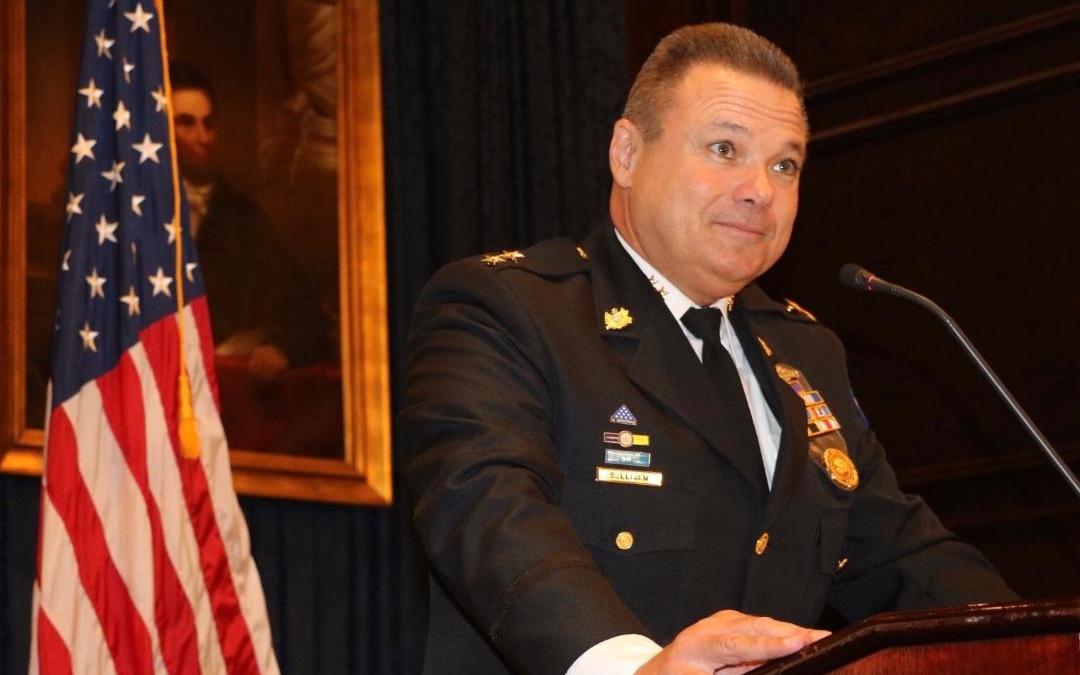I first met and interviewed Joseph P. Sullivan in his office back in 2013 when he was a chief inspector and the commanding officer of the Philadelphia Police Department’s Homeland Security and Counter Terrorism Bureau.
He was promoted in 2017 to deputy commissioner for Patrol Operations, and he oversaw 4,658 police officers and civilian personnel. He was also responsible for most of the department’s $750 million budget. He retired in February 2020.
It’s been a tough time for the Philadelphia Police since he retired. I reached out to Sullivan and asked him what he thought of the Philadelphia Police response to the violent protests last year in the city after the death of George Floyd.
“I really felt horrible for those officers that were out there, especially during the first few days,” Sullivan replied. “The officers were severely undermanned, under-equipped, and there was a lack of command control. There was a terrible lack of personal protective equipment, and a lot of officers were injured. They did the best they could but, as City Controller Rebecca Rhynhart’s valuation noted, it was a failure to plan, a failure to acknowledge existing intelligence and act upon it, and it was a failure to execute at the upper levels of the department.”
He said the poor response demoralized the police department. And the shame of it was it happened a second time later in West Philadelphia, which indicated the leadership didn’t learn any lessons from the first response.
“I know some great commanders in the department who were trying to give sound advice, but it wasn’t listened to. We have always been successful at anti-protests in Philadelphia. We followed the template and we always had plenty of resources on hand,” Sullivan said. “There was a failure to coordinate with our partners as well. I will never be able to thank the State Police for the support they gave me during demonstrations. Never once did I use them, but they were there if something occurred, and having that confidence in my back pocket, knowing that a large group of trained and supervised troopers were ready to respond if needed.”
Sullivan noted that Center City has still not recovered. He said that small business owners who were already struggling from COVID had to rebuild their businesses twice.
“In any large city, the downtown district is the heart and blood of your city. It is where people go for jobs, where they go to spend money, and it impacts tourism, so I hope we see Center City rebound.”
Had you been in command, I asked, would you have ordered tear gas to disperse the protesters on I-676?
“If I had been in command that day, we would have had in place a ramp blocking plan. The plan exists and is documented. The plan details the necessary manpower, vehicles, barricades and other equipment to block the on-ramps and off-ramps in Center City,” Sullivan said. “The way to not put yourself in a position like that is to prevent it from happening in the first place.
“I can’t offer a judgment if tear gas was necessary, as I wasn’t there, but I will say that those ramps should have been secured.”
He said that the commanders and officers on the line that day didn’t have the resources they needed to do that. He also noted that the protesters were wrong for taking I-676, as blocking a major highway puts lives at risk.
“You could see that there were going to be contentious demonstrations. That’s why you need meticulous, coordinated planning. You need to get everyone in the room a couple of times. Get everyone’s input and walk through the plan and put it up on the big screen and ask what’s wrong, how would you change it? When I did that process, I didn’t care if you were a police officer or a chief inspector. If you had an idea, I wanted to hear it.
“Obviously, the existing plans were not utilized. Every bike officer in the city should have been working on that first Saturday. There should have been an ‘all-hands-on-deck’ plan. This is why everything goes back to the initial planning. We always had a large contingent of officers who were capable of controlling crowds. Several hundred bikes really make a difference. The bikes create a barrier between the police and the protesters,” Sullivan explained. “We have commanders with the expertise and the knowledge to properly respond. They have done it successfully many times during the large events we’ve had in the city.”
Next week, Sullivan’s views on the defund the police movement, why he supports Chuck Peruto for DA race, and other issues.
Paul Davis’ Crime Beat column appears here each week. He can be contacted via pauldavisoncrime.com.





